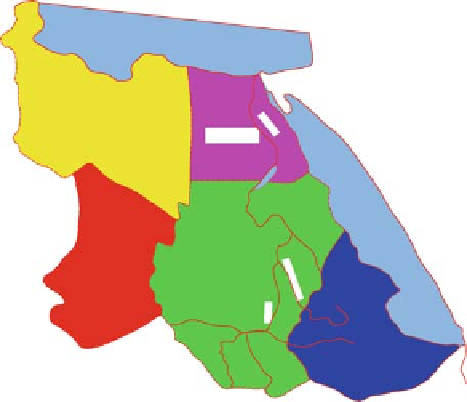Geoscience Reference
In-Depth Information
of Equitable Utilisation', according to which the entire basin of a river would be
deemed as one economic unit and its water would be utilized to the best advan-
tage of all basin countries. Development schemes would have to be planned and
the works are to be executed, jointly or singly, within each territory and benefits
to be shared with other countries. The USA-Canada Treaty on the development of
the Columbia river basin is an example. The river originates in Canada and flows
down through the USA. The scheme envisaged construction of storage dams to help
control floods in the USA and generation of hydro-power for consumption by both
countries. In addition, Canada would get huge financial benefits from the USA to
compensate for the construction of storage dams in Canada and their operation. The
index plan of the Nile river is shown in Fig. 13.3.
The Indus Treaty between India and Pakistan is another example, where interests
of both countries were safeguarded. A compromise between conflicting interests
is the only solution, when faced with the existing and the new, each affecting the
other. Judicial decisions alone cannot resolve water-related disputes; practical con-
siderations yield better results. The most satisfactory and abiding settlement of water
disputes is possible through agreements or treaties, treating concerned countries as
a single united community, undivided by political or administrative boundaries. The
observations of the Rau Commission on the Indus water dispute were on above lines,
which made it most relevant in the eyes of reputed international jurists. Helsinki
Rules emphasize this aspect as under.
Although certain disputes about international rivers and river basins may lead themselves
to third party adjudication under established international laws, the maximum utilization of
drainage basins can more effectively be secured through joint planning. The great number
of variables involved the possibility of future changes in the condition of the waterway,
the necessity of providing affirmative conduct by the basin States and the enormous com-
plexity of a river basin makes comparative management of the basin greatly preferable to
adjudication of each source of friction between the basin States.
MEDITERIAN SEA
LIBIA
EGYPT
CHAD
SUDAN
ETHIOPIA
Fig. 13.3
Index plan of the
Nile river

Search WWH ::

Custom Search